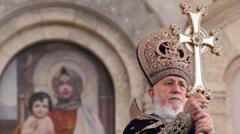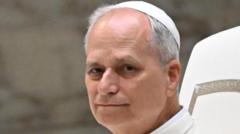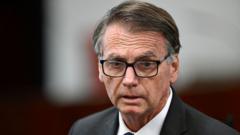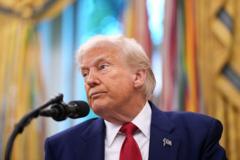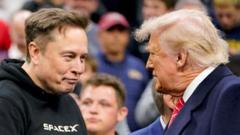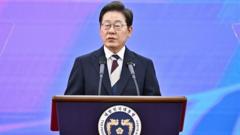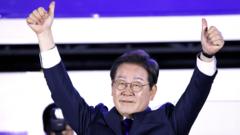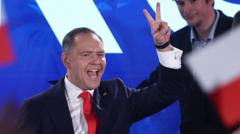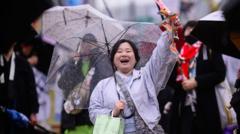In a historic moment, the conclave process kicks off as 133 cardinals prepare to vote for the new leader of the Catholic Church, amid strict secrecy and anticipation from the global faithful.
Voting Begins as Cardinals Enter Secret Conclave to Elect New Pope
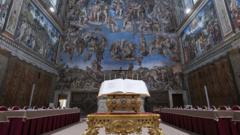
Voting Begins as Cardinals Enter Secret Conclave to Elect New Pope
Cardinals to gather in Vatican's Sistine Chapel to select the 267th Pope following a special mass and deployment of security measures.
As evening descends on Vatican City, the dramatic countdown to the election of the Catholic Church's new leader begins. This Wednesday, 133 cardinals are set to convene in the hallowed Sistine Chapel to cast their votes for the 267th pope. The day opens with a significant mass at St. Peter's Basilica, led by 91-year-old Cardinal Dean Giovanni Battista Re, who also presided over Pope Francis’ funeral.
To ensure confidentiality and prevent any external interference, the Vatican will suspend mobile signals from early afternoon, establishing a veil of secrecy over the proceedings. The cardinals will process to the Sistine Chapel, singing hymns and invoking the Holy Spirit for inspiration as they prepare for their crucial undertaking.
Upon entering the chapel, the cardinals will solemnly take an oath of secrecy, promising to never disclose details of the pope's selection. Once the last cardinal has sworn the oath, the heavily anticipated conclave officially begins with the Master of Pontifical Liturgical Celebrations, Diego Ravelli, issuing the Latin proclamation "extra omnes," signaling that no one outside the cardinal electors can remain.
With the doors sealed by Vatican officials and secured by Swiss guards, the cardinals will receive their voting ballots and proceed to the first vote. While electing a pope in the opening round hasn’t occurred in recent memory, the initial ballot is critical for gauging support among the cardinals. As Catholic commentator Austen Ivereigh notes, the first vote sets the stage for subsequent ballots and indicates which candidates have gained traction in their quest for the papacy.
If the first vote fails to yield the required two-thirds majority, the cardinals will retreat to Casa Santa Marta—a guesthouse—where informal discussions and negotiations will take place over meals that include light fare and wine. The process is shrouded in confidentiality as even the kitchen staff are sworn to secrecy over the conclave's duration.
With breakfast takes place early each morning, leading into consecutive votes throughout the day, the cardinals are well aware that delving too deeply into the voting process could be perceived as a sign of discord among them. Meanwhile, devoted followers await any indication of their new spiritual leader through the traditional signal: the white smoke rising from the chapel chimney, marking the conclusion of the conclave and the election of a new pope.
As the world holds its breath, questions loom about the internal dynamics and leading candidates amid this unpredictable electoral process. Who will emerge from the shadows of speculation to take the helm of the Roman Catholic Church?
To ensure confidentiality and prevent any external interference, the Vatican will suspend mobile signals from early afternoon, establishing a veil of secrecy over the proceedings. The cardinals will process to the Sistine Chapel, singing hymns and invoking the Holy Spirit for inspiration as they prepare for their crucial undertaking.
Upon entering the chapel, the cardinals will solemnly take an oath of secrecy, promising to never disclose details of the pope's selection. Once the last cardinal has sworn the oath, the heavily anticipated conclave officially begins with the Master of Pontifical Liturgical Celebrations, Diego Ravelli, issuing the Latin proclamation "extra omnes," signaling that no one outside the cardinal electors can remain.
With the doors sealed by Vatican officials and secured by Swiss guards, the cardinals will receive their voting ballots and proceed to the first vote. While electing a pope in the opening round hasn’t occurred in recent memory, the initial ballot is critical for gauging support among the cardinals. As Catholic commentator Austen Ivereigh notes, the first vote sets the stage for subsequent ballots and indicates which candidates have gained traction in their quest for the papacy.
If the first vote fails to yield the required two-thirds majority, the cardinals will retreat to Casa Santa Marta—a guesthouse—where informal discussions and negotiations will take place over meals that include light fare and wine. The process is shrouded in confidentiality as even the kitchen staff are sworn to secrecy over the conclave's duration.
With breakfast takes place early each morning, leading into consecutive votes throughout the day, the cardinals are well aware that delving too deeply into the voting process could be perceived as a sign of discord among them. Meanwhile, devoted followers await any indication of their new spiritual leader through the traditional signal: the white smoke rising from the chapel chimney, marking the conclusion of the conclave and the election of a new pope.
As the world holds its breath, questions loom about the internal dynamics and leading candidates amid this unpredictable electoral process. Who will emerge from the shadows of speculation to take the helm of the Roman Catholic Church?



